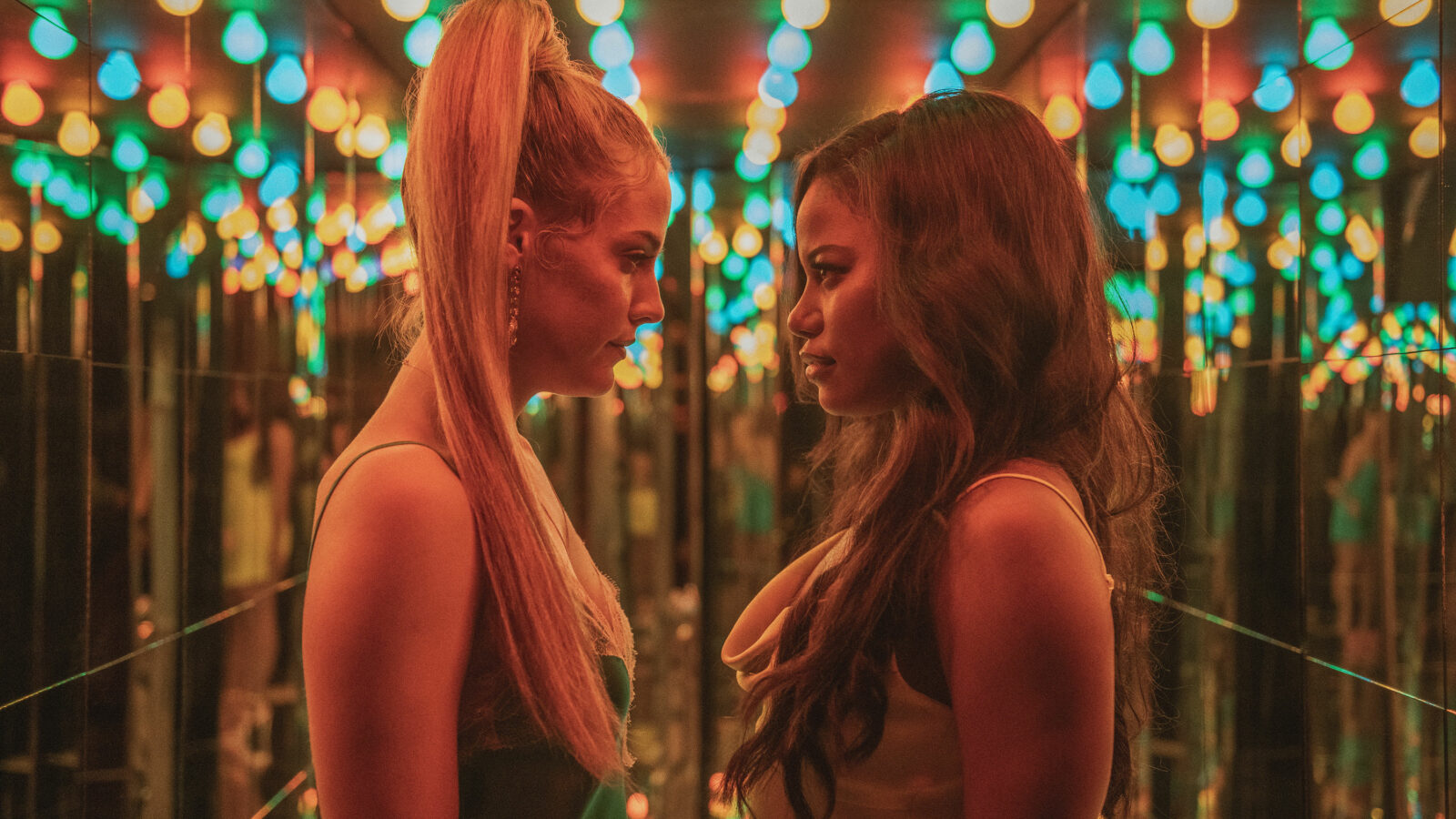In 2015, Aziah “Zola” King’s 148-tweet epic took the internet by storm. The viral thread read like a Jack Kerouac novel and captured people’s attentions with every 165 characters. When it was announced that it would be made into a movie, there was apprehension around the move. Could 148 tweets—which each take seconds to read—properly adapt to a full-length feature? The answer is “Hell yes!” Over the course of a perfectly short, 90-minute runtime, Zola manages to be fun and stylish as it also focuses on female friendship.
Directed by Janicza Bravo, who co-wrote the screenplay with Jeremy O. Harris, the film follows Zola (Taylour Paige), a waitress who’s roped into a spontaneous, interstate road trip to Tampa, Florida by Stefani (Riley Keough), a wild dancer always looking for somewhere to make a quick buck. What was supposed to be a weekend to get some quick cash turns into a perilous escapade involving Stefani’s pimp (Colman Domingo) and anxious boyfriend (Nicholas Braun).
Paige and Keough bounce off of each other with intense energy and commitment to their roles. Whenever they’re in a scene together, your eyes never leave the screen because you’re so intrigued by the way they move and speak. As Zola, Paige is able to channel a character who toes the line between daring and cautious. She’s willing to help Stefani make the money that she’s worth but will always be aware of her own interests in the end. “Who’s looking after me?” she asks Domingo’s character after a chilling situation involving Stefani and one of her clients. That single line speaks a thousand words about the safety of Black women, and it’s one that sticks with you for the rest of the film.
Zola drips with social media essence.
It’s hard to get a read on Stefani’s role in this odyssey. Is she a con artist who traps unassuming women in a sex trafficking ring? Or is she a victim herself who truly didn’t know what she was getting herself, and Zola, into? Keough never tells you the answer and lets you come up with your own interpretation.
Bravo and Harris went all out on Zola’s aesthetic, making it drip with social media essence. They could’ve gone for a much darker genre, but they manage to keep the insanity intact. This was based on a wild Twitter ride after all. There were some parts that didn’t completely land, like the random shift to Stefani’s POV. Even though it was based off a Reddit AMA that the real Stefani did, it felt out of place, especially in the scene it interrupted.
Secondly, there were some changes to the narrative, mainly revolving around the backstory for the pimp. In the tweets, Zola describes his downright horrid acts in vivid detail and unfolds his villainous past. Bravo and Harris decided to forego that extra material, which is both a good and bad thing. It’s good because the audience already knows how cruel he is and doesn’t need to see him sexually assaulting someone to make that point.
The film’s energy and style is sure to impress and keep viewers engaged from beginning to end.
That said, it would’ve been nice to get some sort of background information, because his character felt a little flat. The bit about him suddenly having an African accent would make sense for those who already read the original tweets, but for those going in fresh, it might be confusing.
Since its buzzy premiere at Sundance in 2020, people have been foaming at the mouth to see Zola, and it’s safe to say they won’t be disappointed. The film’s energy and style is sure to impress and keep viewers engaged from beginning to end. Just a slight warning, though: This film may encourage viewers to doll themselves up in glitter. Lots of glitter.
Advertisement
Zola is now playing in theaters. You can watch the trailer here.
Advertisement
